 Still put on the home of our star family.
Still put on the home of our star family.
Nonsense The first paragraph: I saw Zhang Aunt’s appearance of more informational articles and the establishment of an encyclopedia channel. It was felt that not only would value-friends be better able to buy and buy, but they would also be able to have more characteristics about the goods. A good understanding, so as to better play its value, and even further improve the quality of life (ashamed to make a mess, I do not know why). With this platform, value-friends enthusiastically share their experiences and insights with each other, which also makes Aunt Zhang a highly active commodity website. The good atmosphere made this lazy cancer patient unable to resist the code share.
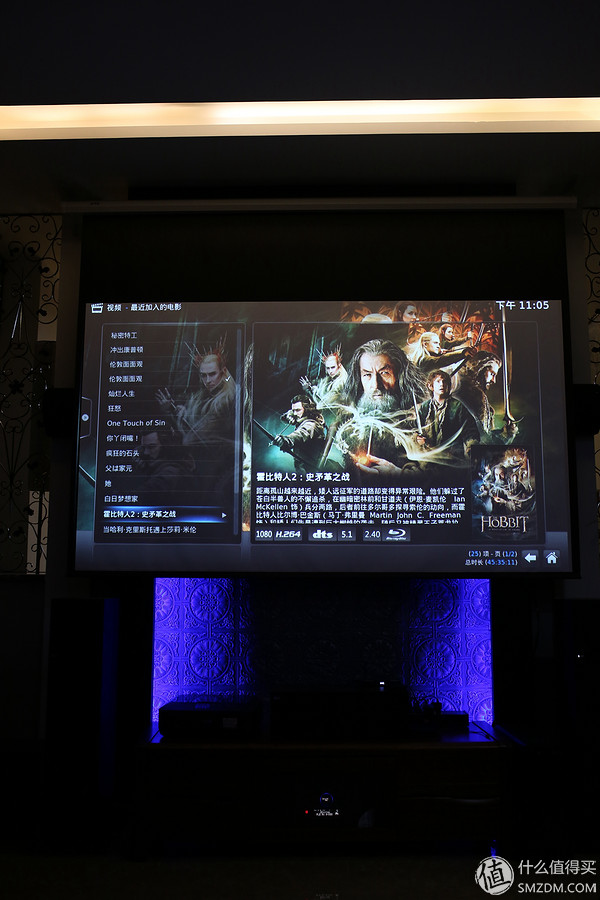
Nonsense Paragraph 2: The reason why I wrote this article is because there are many people who set up a home theater. However, for speaker setup and bass management in amplifiers, few people emphasize its importance, as if only bought a power amplifier and bought a speaker. The effect can be achieved, and debugging does not play a significant role. There are no detailed guidelines on the Internet. Before the speaker had just bought, I encountered problems in setting up, and then the views of the netizens on the forum, but I did not finally understand what kind of settings are more suitable for me, I feel how to set as if they have not reached the ideal The effect, thought it was a poor speaker to buy. However, the effect of speaker discovery was later updated. Therefore, the descriptions of various setting items in the manual have been carefully studied recently, and in combination with the guidance on the Internet, the speaker settings and bass management have been carefully interpreted, and various combinations of settings have been made. Situation 11 confirmed the differences among the experiments and found that there were great doors (previously it was thought that the setting effect would not be too great, and the effect mainly depends on the quality of the speakers). In fact , the entire system was completely refreshed after the setting was changed. It was only then that the speaker was wrong, but I was wrong. It doesn't matter if I'm wrong. I can't let more people make the same mistakes again. Therefore, I'd like to share my experience with the value-friends so that the value-friends can use the equipment they have.

Due to some concepts and specific amplifier settings, this article is relatively boring, because there are not many blueprints, and in order to clarify the relevance of various settings, to ensure that the logic is correct, and let the value of friends who want to understand the principle can be inferred And test my theory, I will put a part of the original words in the manual, and then infer the output of each set of results, and finally verify the experiment. So if you don't want to dive into the principles, you only need to pull the final guideline conclusion.
Speaker position:Regarding the placement problem is not the focus of this article, there are many references, see the surround sound system, put two pictures here to avoid comrades do not understand the front height speakers and the panoramic sound top speaker position.
7.1 channels add back surround over the basic layout of 5.1 (two behind sofa)
9.1-channel plus front height surround, also known as front portrait surround (two above the main speaker)
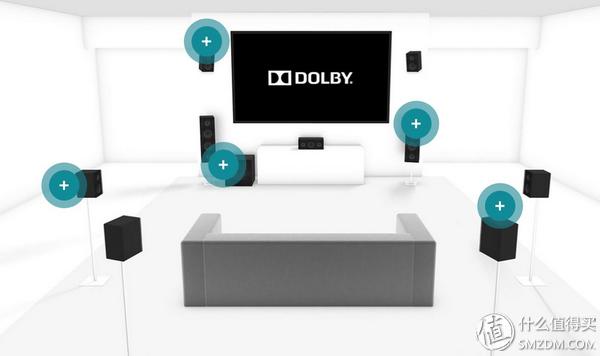
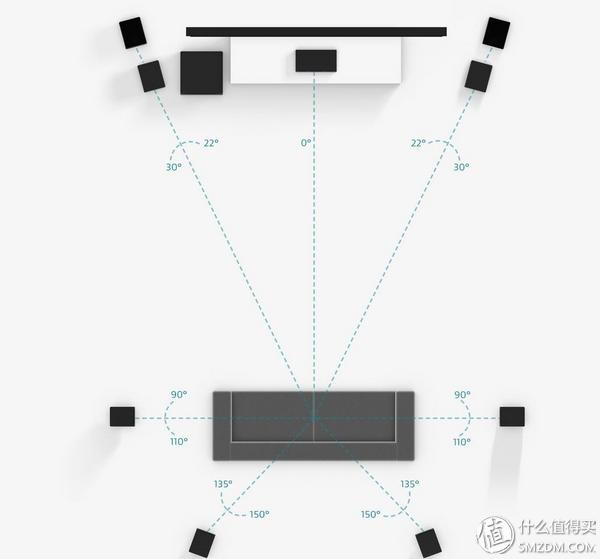
Panoramic sound system (5.1.2 channels, 5.1.4 channels, 7.1.2 channels, 7.1.4 channels, where the third digit is the top speaker)
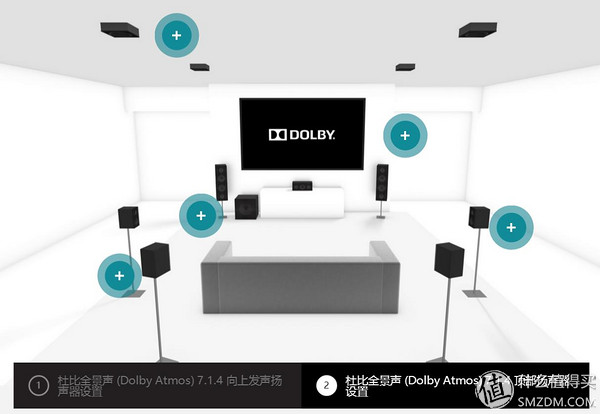

Nonsense The third paragraph : A few years ago, when the decoration was hanged by the designer, it was popular to put the surround speakers on the ceiling (living room), so that it did not occupy the floor space is also more beautiful, I believe, the result is due to the living room. The ceiling height is high, the surround effect is a mess, and the second is the resonance of the ceiling (the ceiling speaker is actually a buffer spring to prevent resonance, so the feeling is that the construction workers are also pitted, and the hole is initially dug up causing fixed problems). He also had to listen to the resonance of the ceiling. It was almost unbearable. Eventually I decided to give up the use of these two ceiling speakers and bought a pair of floor boxes to surround the sofa. So the conclusion is that you must do your homework during the renovation, do not believe those second-rate designers, after all, they are not professional for home theater. There is also a line of advance cloth that must be bought by oneself. At that time, the project manager said that the wire was good, and I found out later that the copper core inside the audio cable was really pitiful. It was only when the figure was broken that Tucson had broken out. He was greeted by designers and project managers. It was all tears. However, the line of the ceiling cloth has been abandoned anyway (unless the amplifier is replaced with a panoramic sound system as the top speaker, but it is too high, and the cost of renewing the amplifier is too great. The effect is not necessarily good, and it is estimated that it will not be tossed. ), The floor was surrounded by the designer's line before the designer had no cloth, and now I can only walk around the wall. (The picture below shows ceiling speakers and projections)
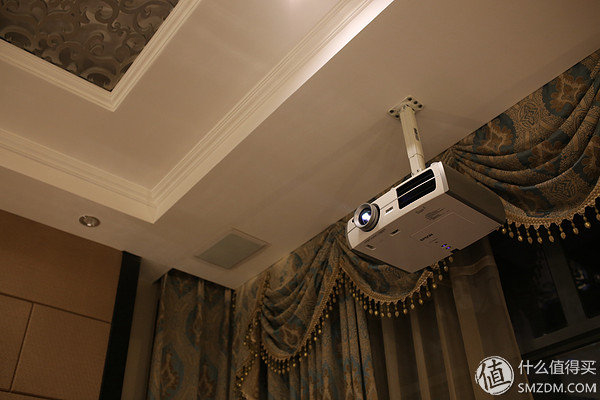
Nonsense Paragraph 4: Perhaps you have to ask me why I want to install a home theater in the living room. Actually, I just want to save a television in the living room. In addition, there is always a damp feeling in the south basement, and it is usually not loved. Considering that if the basement is used as a home theater and the restaurant puts on a TV, it feels like the utilization rate of the living room TV is very low, and if the TV in the living room is small, then it does not look good. Let me buy a big LCD and watch the monks. Of course, you would say that the basement has good bass and can do sound-absorption processing, but the deaf people are not so demanding, and they would rather spend more on the speakers. This choice mainly depends on personal needs. If you are a professional, you are still suitable in the basement. After all, you don’t need to consider the beauty and space, and set n speakers to engage in panoramic sound. The premise is drainage, dehumidification, sound absorption, and air conditioning. Well, the most important thing, of course, is money! Then he wouldn't open a large TV set to let the living room open, just to force it. But the advantage of having a video room in the basement alone is that the light is better controlled. If you do it in the living room, you have to look at the projector and you have to put on the curtains, and the light leakage may affect the viewing effect. Actually experience the double curtains are still very good, sometimes do not want to be too dark will open a little curtain, because the projector's lumen is enough, and I am not too sensitive to these subtle effects. (Many pictures in the article also opened the lights, one is to make the environment clear, and the other is to increase the loading effect. In fact, it is impossible to turn on the lights at night in a normal movie. The blue background lights with ceilings are opened at most).
Another position: Audyssey DSX position ( 72+ front height speakers + front wide speakers)

Above said so much nonsense, did not talk about the deaf speaker position. Since I bought a set of 5.1 speakers (and a pair of ceiling speakers that I decided to give up), I purchased a pair of floor boxes plus a center surround and a subwoofer. Caused my group to have a 7.2 more speakers (4 floor boxes, 2 subwoofers, 2 center, 2 surround speakers). On the 7.2 channel, I can choose 5.2+ surround back or front height speakers or front wide speakers (actually no consideration because there is no space) , and because my sofa is against the wall, try the front height speakers. The effect is obviously better than the back surround. Gu finally adopts the following settings. 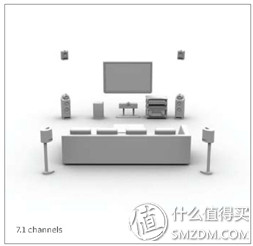
Checked relevant posts on the Internet, there are also many users believe that based on the human ear pickup characteristics (more sensitive to the front of the sound), increase the height of the front speakers will be better than the back surround, especially for the sofa against the wall of friends The front height speakers should be selected in the case where the rear speakers cannot be pulled apart. (front height speakers see black blocks on both sides of the screen)

Enter the topic below. After the speakers are all connected, turn on the amplifier. Connect the amplifier to the microphone according to the setting assistant to start the automatic debugging mode. (This process recommends using a tripod and moving the position to test many times for better results. After all, this Lazy time will always affect the effect of the future, anyway, I measured the seven or eight specific debugging matters need to pay attention to see here and see here). Audyssey adjusts most of the parameters based on the data measured by the microphone. However, the automatically set speaker configuration and subwoofer mode are not necessarily the best modes, that is, the problems to be discussed below. (Inferred from the ash on the tripod, the photographic player has basically gotten a fever)
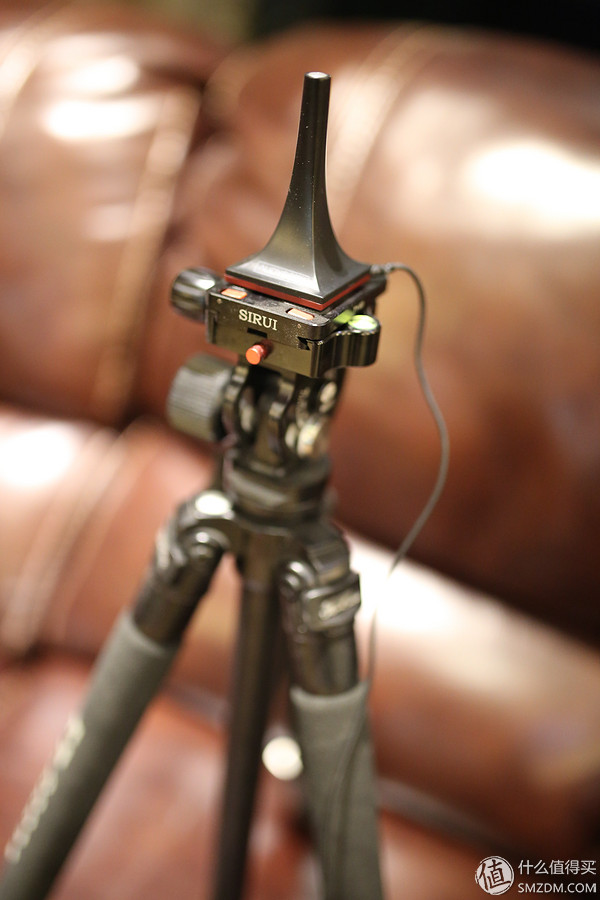
================================================== ==============
About speaker configuration and subwoofer mode:
Speaker configuration:
Big: Large speakers with sufficient low frequency playback capability
Small: Small speakers that use low frequency playback capability
The above is the note on the description, but in fact the setting of the speaker size in the AV amplifier together with the setting of the subwoofer mode below will affect the bass assignment of each channel. Therefore, the setting in the amplifier does not really have to be based on the box generation unit. Size and bass playback ability to choose. And this is the focus of this article. There are also many articles on the network that should be set to small, but it does not specify the speaker size settings with the subwoofer mode adjustment produced by the various configurations of the bass distribution mode, did not delve into the principle of such settings and other various The specific difference is set.

Subwoofer mode: (The following is an explanation of the manual)
LFE: A low-frequency signal that sets the speaker to a small channel is added to the LFE (low-frequency effect) signal output from the subwoofer
LFE+Main: Adds the low-frequency signals of all channels to the LFE (low-frequency audio) signal output from the subwoofer
If you want the bass signal to always be reproduced through the subwoofer, select LFE+Main mode
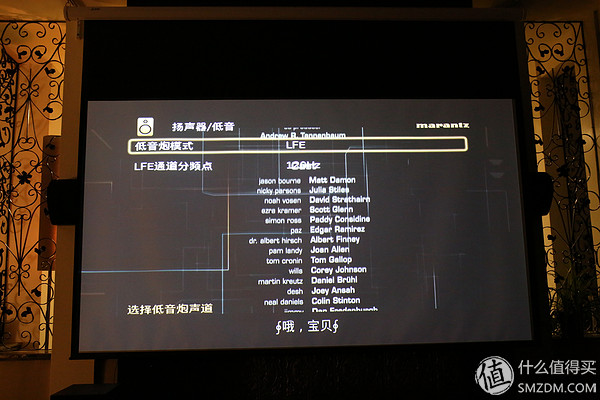
======================================================================================================== =========
1, can use the cross frequency setting when the subwoofer mode is set to LFE + Main or the speaker is hours
(When LFE is selected, the crossover frequency can be set for the small speaker. If the speaker is large, the full band cannot be set. If it is set to LFE+Main, the crossover frequency can be set regardless of the speaker size)
2. Always set the crossover frequency to 80Hz. However, when using a small speaker, it is recommended to set the crossover frequency to a higher frequency. ( For a small speaker, the sound below the crossover frequency in the sound output will be cut off, and the cut-out bass output from the subwoofer or front speaker )
3. If the front and center speakers are set to large and the subwoofer mode is set to LFE, depending on the input signal or the selected sound mode, the sound may not be output from the subwoofer. (does not play in music mode without LFE signal)
========= = =====
Based on the above three items, and the definition of the subwoofer two modes LFE and LFE+Main modes, the bass assignment of each channel can be deduced in various speaker configuration modes with different subwoofer modes.
Set one: all set to small speakersThe LFE mode is the same as LFE+Main. The low frequencies below the crossover point are assigned to the subwoofer. In this case listening to music also automatically uses the subwoofer. (because the subwoofer always plays the low frequencies of the two main channels)
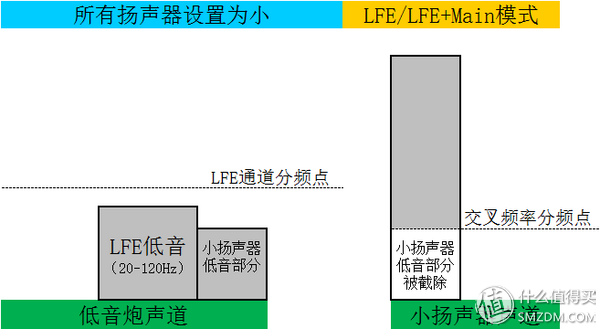
2.1 Setting the LFE mode, the subwoofer is only responsible for the LFE signal (.1 channel), and the large loudspeaker is responsible for its own full band. In this case, since the subwoofer only plays the LFE signal, the subwoofer will not be called when playing music or without a 1-channel source, regardless of the music mode or movie mode! (that is, the subwoofer is in the out state when playing only normal stereo video! Therefore, watching this movie is strongly not recommended, even if all speakers are floor boxes)
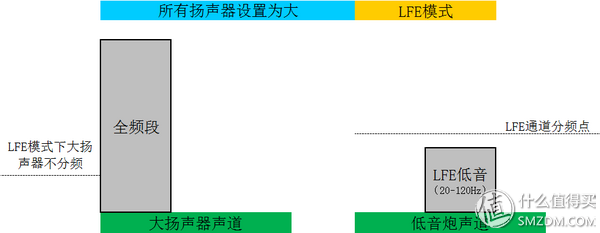
2.2 Set the FE+Main mode to reproduce the subwoofer at low frequencies below the crossover frequency (all large speakers are fully banded). At the same time, all large speakers add the LFE bass signal when playing the full band of their own channels. The subwoofer is called in both music mode and movie mode.
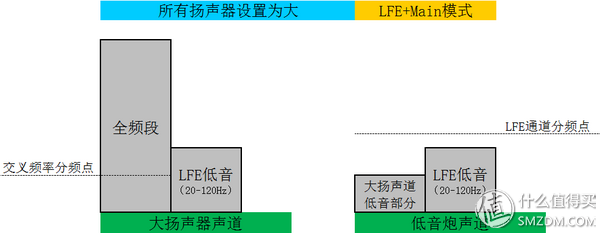
3.1 Setting the LFE mode, the bass below the crossover frequency of the small speaker will be reproduced for subwoofer reproduction (full-range speaker for large speakers). At this time, the front speaker is large and the music mode does not call the subwoofer. In movie mode, the subwoofer only plays the LFE channel as well as the bass of the surround channel.

3.2 Set LFE+Main. The mode will reproduce the subwoofer with bass below the crossover frequency of all channels. At the same time, the large speaker will also play the LFE channel and reproduce the bass of the small speaker. At this time, since the front two-channel bass is also reproduced in the subwoofer, the music mode also calls the subwoofer.

Above, in short, the biggest difference between the LFE and LFE+Main modes is whether the speaker set to be large plays the LFE channel.
(Despite the fact that this side is relatively short and has only five maps, it is very strenuous to sort out the logical relationship among them. Debugging on a power amplifier cannot simply sort out the relationship between them. Finally, it is discussed on paper and discussed. The above result is compared with the definition in the description of the specification, which includes the speaker size and bass assignment and the logical relationship between the crossover frequency points.In addition, the LFE channel crossover point >= small speaker crossover frequency crossover point >= Large speaker crossover frequency crossover point, the general setting should also be the same. LFE channel crossover frequency is generally recommended to set to 120Hz, crossover frequency divider network is recommended to set at 80Hz)
================================================== ===============
In order to better understand the above bass assignment mode, pick out the LFE and Subwoofer (subwoofer, which is the subwoofer channel in the above picture) to better understand the above configuration with the speaker configuration and subwoofer mode. Channel bass assignment conclusion:
The LFE is a signal channel with a bandwidth of 20-120 Hz (DTS is 20-80 Hz), which is independently present in the 5.1 sound track. It is also the least important channel in the 5.1 track. Its appearance is intermittent, not every moment. For an action movie, the total time of its LFE soundtrack may reach 20 minutes. A piece of art may be 5 minutes. LFE is less, at best, the low frequency is not enough, but it does not affect the audience watching the movie.
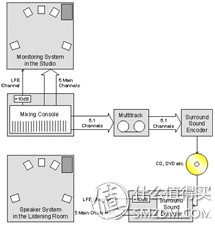
Subwoofer is the soundtrack . The low-frequency signals played on the Subwoofer include the low frequencies of all channels (eg, below 80Hz), and the LFE channel. So, in most cases, the subwoofer is responsible for the low-frequency playback of the entire home theater system.
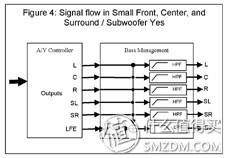
================================================== ================================
After reading the above inferences, which configuration to choose in the end, insert a hot quote on the Internet here:
If my home system uses a floor stand, do I still need to set the speaker to Small? Yes! If you must set the speaker to Large, then the speaker's bass unit must be at least 15 inches or 12 inches, and the power must be large. However, even if you have such a big speaker, you should set it to small!
why? Because the low-frequency standing wave in the small room seriously affects the low-frequency sound quality, if you play the low frequency in the left and right main boxes, it is very likely that the position of the main box will excite a standing wave frequency in the room, thereby deteriorating the low-frequency sound quality. Moreover, since the low frequency is played at a plurality of different places at the same time, the degree of integration of the low frequencies at the audience position is very difficult to debug. In order to obtain a good low frequency effect, it needs a bit of luck in addition to the post-commissioning. Therefore, this mode is not recommended for high-quality home theaters. If all the low frequencies in the system are handed to the subwoofer for unified management and restoration, then the position of the moving subwoofer (the position of the left and right main boxes will have a small range of movement? If it can be moved, it may also cause other problems. , Such as room boundary reflections, etc., or using multiple subwoofers, can suppress the low frequency standing wave effect.
Some of the original words from the latter paragraph of the same article were integrated in advance in this paragraph to give the valued friends a simple and comprehensive understanding.
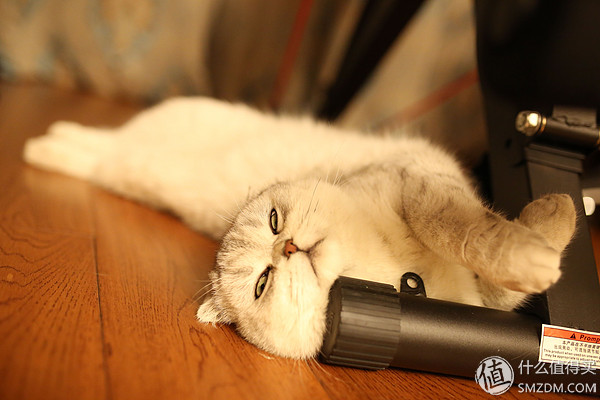
What the squat wave does not know very well, but the above paragraph probably means that because the main speaker position can not move and the subwoofer can adjust the position to suppress the bass standing wave, so the bass is selected by the subwoofer to play. In addition, the article also said that low-frequency playback in multiple locations is difficult to debug, the effect of watching luck, but that can use multiple subwoofer suppression standing wave, seemingly contradictory . However, the author's intention is that it is difficult to debug using multiple subwoofers, but it is still possible to obtain better results by adjusting the position of the subwoofer. But in reality, most people don't have professional equipment, and they don't compare the difference in sound effects by adjusting the position of the subwoofer. (There are so many positions in the room, and they don't know the standing wave effect produced by each position. There are multiple cannon positions. Tune, let professionals come to feel headaches too). And according to this theory, if the main speakers also play low frequencies, and just good luck, the position of the speakers can also enhance the bass effect if there are few standing waves. So although I can see below that my recommended setting is that all speakers are set to be small, but for the paradoxical consideration of the above paragraph, I still take into account the multiple bass mode. However, other parts of the text are well-placed, especially regarding the difference between Subwoofer and LFE (one of which has been extracted at the top). It is recommended that you read the original text (please refer to Baidu “On the Audio Standards for Home Theater, Chapter 5, Subwoofer and LFEâ€).
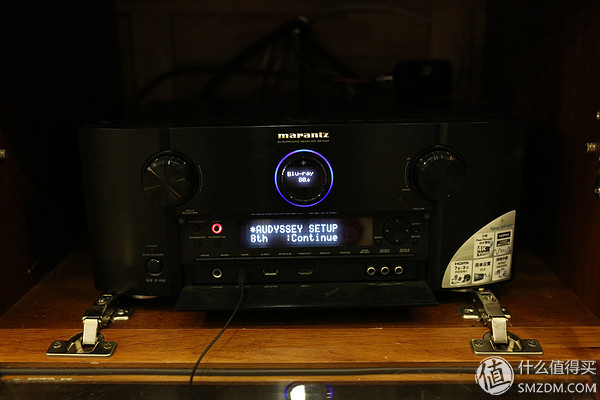
1. It is recommended that all speakers be set to be small under normal circumstances. At this time, the LFE mode and LFE+Main mode are all the same. The bass is handled by the subwoofer and the load of other speakers is reduced. If the bass playback capability of the main speaker is strong, it may be appropriate to reduce the crossover frequency of the speaker crossover (though it is recommended to keep Audyssey's parameters measured automatically).
2. If the space is large and the quality of the subwoofer is normal, if you want to watch a movie in which the large speakers also play the LFE channel (equivalent to double bass) to increase the overall bass performance, you may consider choosing a 2.2 or 3.2 setting depending on the actual situation of the speaker. At this time due to the higher bass load of the front speakers, the overall sound effect will be generous, and then take into account the luck of the standing wave, whether the specific effect is pleasing also please decide for yourself, after all, everyone's listening environment and speaker quality and bass preferences There are differences.
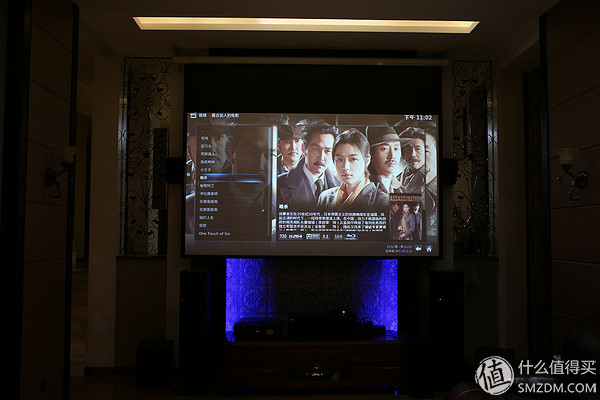
In addition, many people like to use only two main speakers in a mode specially designed for listening to stereo music. At this time, it is necessary to set the main speaker to be large, and the bass mode uses the LFE mode. (Generally listening to music and watching movies use different input sources, so do not change them after setting them. Different input sources correspond to different settings.) The main speaker is set to a large speaker. When using LFE+Main mode, the main speaker plays stereo full-range audio. At the same time, low frequencies below the crossover frequency crossover point will be reproduced using a subwoofer (equivalent to double bass), and the main speaker will be set to a small speaker (no difference between LFE and LFE+Main modes at this time) if the crossover frequency is below the crossover frequency It will be given to the subwoofer (the main speaker plays the frequency band above the crossover frequency).
Tips: Of course, you can also use DIRECT to output unadorned sounds in music mode. At this time, only two main speakers are used to output stereo sound.

A lot of people (including me) struggle with the need to use dual bass when watching movies (especially when we have a home theater that causes the low frequency sound pressure to be insufficient in a living room). Personal feelings can be debugged using the music mode first, playing stereo sound. Music contrasts the difference between the first configuration and configuration 2.2. In this case, fewer options need to be adjusted and the effect is more obvious. If the quality of the main box and the subwoofer is very good, it is recommended that you do not have a good double bass. After all, there is an unpredictable standing wave effect. For me personally, according to the amplifier, speakers, environment, of course, the main thing is to toss and contrast the actual effect many times, I finally made a choice to give up the double bass. However, I cannot confirm whether the use of double bass will achieve better results when the space subwoofer is of a good quality. This requires netizens to use their own ears to judge the final choice based on their actual situation. The main consideration is that double bass will increase the load of the amplifier and the main box. Even if the power amplifier and the main box are powerful enough, you need to take into account the problem of luck, which is the effect of standing waves. That is to say, in the amplifier power enough, the main box bass playback ability is strong, good luck to play the bass speaker position is appropriate to cause a small effect of the standing wave, the double bass effect may be less than using only the subwoofer to play low frequency The effect is better.
Crossover frequency setting:

The crossover frequency setting has already been mentioned above, and the cut-off frequency of the large speaker can be appropriately reduced according to Audyssey's automatic setting, or when the speaker quality is good and the power of the amplifier is high. The crossover frequency of the small speaker will be given to the subwoofer (the small speaker will not play this band). The large speaker can set the crossover frequency in the LFE+Main mode. At this time, the frequency below the crossover frequency will be reproduced in the subwoofer (large speaker Also play this band)
Here the small surround speakers are generally set to 80 or more (my surround speakers use the floor box), if you use a large speaker (whether set to large speakers or small speakers) is generally set to 80 or 60, the specific See speaker bass playback capabilities and amplifier quality. Raising the crossover frequency of each speaker increases the subwoofer load, and decreasing it increases the speaker and amplifier load. (In the LFE+Main mode, increasing the crossover frequency will increase the load of the subwoofer but will not substantially reduce the speaker and amplifier load. This is equivalent to adjusting the frequency range of the double bass of the entire system. Adjusting the crossover frequency increases the double bass. Frequency range increases overall system power consumption
The most important sentence of this article is inserted here: For those compatriots that are hard to understand or do not want to understand in this article, after using the setup assistant to debug all the parameters with the microphone, set all the speakers to small and adjust the other settings below. If you don't see this sentence, then you can't blame me.other settings:
MultEQ: Audyssey
The audio switch must be turned on, and Audyssey automatically debugs it for a long time. Can not open the effect of a great difference. (It is said that in addition to speaker levels, distances, crossover frequencies, equalizers, and the like, the automatic adjustment also includes many parameters that cannot be manually set including numerous equilibrium points, detailed low-frequency management, and the like.
Dynamic EQ : On.
Note: Audyssey Dynamic EQ is a dynamic EQ equalizer. Based on the basic EQ, he adjusts your bass and bass performance at relatively low volume, just like the loudness switch on some old stereos, but Audyssey Dynamic EQ is more Smart, it can dynamically adjust based on the volume DB value, and it will become less and less effective as you slowly increase the volume, until it completely fails when it reaches the reference value (that is, the value you set). In most cases we should turn this feature on and if you have confidence in your overall sound system you can turn it off (it is recommended or turned on, it can improve the performance at low volume).
Dynamic Volume : This is to adjust the overall audio dynamic range, if you open it will compress the dynamic range, making the overall volume dynamic tend to be flat, but more details will be highlighted. Suggest Light (light) or off when watching a movie. Pursue the choice of various channels to restore the degree of selectivity, I hope to have more details to choose Light. Must be closed when listening to music.
Audyssey DSX : According to whether or not to use a height speaker and a front widening speaker, nothing can be opened.
LFE channel frequency division point: 120Hz is recommended.
Note: LFE is the signal channel, bandwidth 20-120Hz (DTS is 20-80hz), so the bass crossover point is set to 120Hz is more appropriate.
Audio M-DAX: Recommended compressed audio signal, suggest off, especially when listening to music, otherwise it will feel distorted, especially the high frequency will be a bit strange, is the legendary digital taste. Like the digital flavor of another, consider opening a Light.
Note: Marantz's own second-generation digital audio expansion technology optimizes sound quality, recalculates the output frequency range of audio signals such as MP3, Windows Media Audio, or AAC, and then expands it to a wider frequency range to improve high frequency extension and low frequency. Sense of quantity
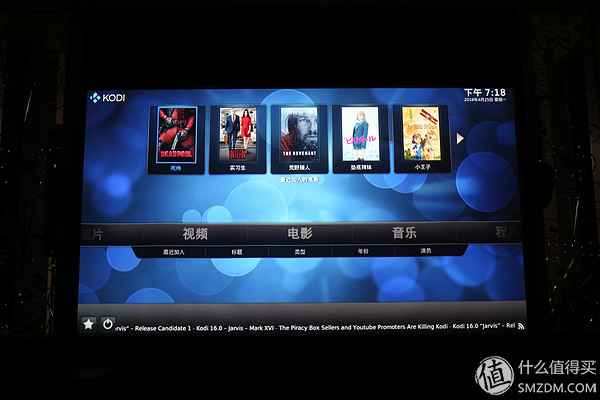
Notable places:
1, if the speaker is a high and low frequency divider speaker (4 terminals), the upper and lower connection of the copper must be kept in good contact. Otherwise, if the wiring is connected to the upper tweeter terminal but the copper is not in good contact, the low frequency speaker will not be called.
2. The Adussey Dynamic EQ may be turned off after the speaker size is adjusted automatically. Be sure to remember to turn it on again. The effect is very different.
3, The adjustable parameters depend on the input signal and the current setting mode. And many settings need to be performed during playback, with the option to play the tone otherwise the option is gray.
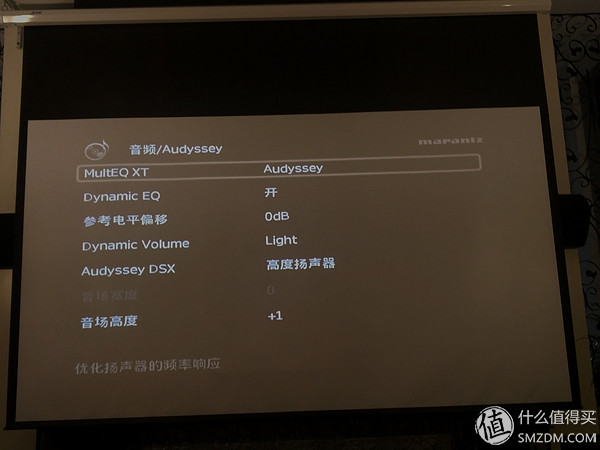
Finally borrow again Simple and practical! Tell you one of six key words about the subwoofer:
“Setting the main speakers to full range will inevitably put more burden on the front left and right channels and the AV amplifier's own amplifier circuit. Even if you use high-efficiency left and right channels and high-power output AV amplifiers, the low frequency performance should be It's better than the built-in AV amplifier, which uses a single active subwoofer, and the dedicated dedicated active subwoofer can independently adjust the volume, crossover frequency, and phase. According to the space and speaker position and freedom to choose the location of the installation, for the entire multi-channel system in the mid-bass zone adjustment part, but also than the use of 5.0 channel has more flexibility to adjust the space."

I chose to set all the speakers to be small. The first is to reduce the load on the amplifier and speakers, and the other is to avoid the confusion of the bass turbid sound field. Since the bass frequencies below the crossover point give the subwoofer better performance (and the crossover frequency crossover points of all the speakers under this setting can be adjusted), why not make the main tank lightly lighten, so that they can perform their duties and get a whole. Elegant, bass-quality listening effects.
Here is another important sentence to insert: If there is no subwoofer (there is no such thing, the bass of the small speaker will play in the big speaker), please pay attention to the importance of the subwoofer Baidu to buy subwoofer, or do not Baidu See the article above after purchasing it directly.
Personal level is limited, there is something wrong, please point out, I hope you have more exchanges.

Unconsciously, the night is already deep, and finally at the end of Meng Bao, thank you for watching.
High Temperature Lead Acid Battery
Lead Acid Sealed Battery,High Temperature Battery,Good Performance Battery,Maintenance Free Sealed Battery
Wolong Electric Group Zhejiang Dengta Power Source Co.,Ltd , https://www.wldtbattery.com
